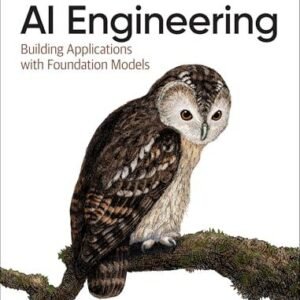As we stand at the brink of a technological revolution, the convergence of artificial intelligence and drone technology promises to reshape the landscapes of surveillance and delivery in ways previously thought to be the realm of science fiction. From the bustling metropolises to remote rural areas, AI drones are not only enhancing our ability to monitor, protect, and manage our environments but are also transforming how goods and services are transported across the globe. In an era where efficiency, safety, and timeliness are paramount, these cutting-edge aerial machines are poised to become indispensable tools in both the public and private sectors. In this article, we will explore how AI-driven drones are set to revolutionize surveillance practices, streamline delivery systems, and the implications these advancements hold for society at large. Join us as we delve into a future where the sky isn’t just the limit; it is a pathway to innovation.
Table of Contents
- Transforming Urban Safety Through Advanced Surveillance Drone Technologies
- Enhancing Last-Mile Delivery: The Role of AI Drones in E-Commerce Logistics
- Regulatory Considerations for the Integration of Drones in Public Spaces
- Future Innovations: Leveraging Machine Learning for Safer and More Efficient Drone Operations
- To Wrap It Up
Transforming Urban Safety Through Advanced Surveillance Drone Technologies
The integration of advanced surveillance drone technologies into urban safety measures is reshaping our cities. These drones are no longer merely aerial cameras but are equipped with sophisticated AI algorithms that enhance their capabilities in real-time monitoring. With functionalities like facial recognition, crowd tracking, and suspicious behavior analysis, these drones provide law enforcement with critical insights that can lead to faster response times and improved public safety. The use of drones allows for a broader surveillance range without the need for extensive ground presence, ensuring that cities can maintain high levels of security even in densely populated areas.
Key benefits of deploying surveillance drones include:
- Enhanced Monitoring: Drones can cover large areas quickly, providing comprehensive surveillance that ground units alone may struggle to achieve.
- Data Analytics: AI capabilities enable drones to analyze data on-the-fly, identifying patterns that may indicate security threats.
- Cost-Effectiveness: Reducing the need for extensive manned patrols can lower operational costs for law enforcement agencies.
- Community Engagement: Drones can foster trust through visible monitoring and participation in community events.
| Drone Feature | Benefits |
|---|---|
| Real-Time Data Processing | Instant threat identification |
| Autonomous Navigation | Reduced human error in monitoring |
| High-Definition Imaging | Clear visuals for investigating incidents |
Enhancing Last-Mile Delivery: The Role of AI Drones in E-Commerce Logistics
The integration of AI drones into e-commerce logistics is significantly transforming the last-mile delivery landscape. These autonomous aerial vehicles are equipped with advanced algorithms and machine learning capabilities, enabling them to optimize delivery routes and improve operational efficiency. Drones can analyze traffic patterns, weather conditions, and other real-time data to select the quickest and most cost-effective paths for delivering packages. This is particularly beneficial in urban areas where congestion can delay traditional ground delivery methods. By leveraging AI, drones reduce delivery times and operational costs, ultimately enhancing the customer experience and increasing satisfaction.
Moreover, utilizing AI drones for last-mile delivery offers various environmental benefits. Drones produce fewer emissions compared to traditional delivery trucks, helping e-commerce companies minimize their carbon footprint. Additionally, they can operate in diverse terrains and reach remote locations that are otherwise difficult to access. Some key advantages of AI drones in logistics include:
- Speed: Drones can significantly decrease delivery time.
- Cost-Effectiveness: Lower operational costs for businesses due to reduced reliance on ground vehicles.
- Flexibility: Ability to navigate around obstacles and adapt to changing route conditions.
- Sustainability: Reduced greenhouse gas emissions compared to traditional delivery methods.
| Feature | Benefit |
|---|---|
| Navigation | Smart routing powered by AI algorithms |
| Delivery Speed | Reduced time to receive goods |
| Accessibility | Reach remote and hard-to-access areas |
Regulatory Considerations for the Integration of Drones in Public Spaces
The integration of drones into public spaces requires a thorough understanding of the regulatory landscape to ensure safe and responsible usage. Regulatory bodies must grapple with a variety of considerations, including airspace management, privacy concerns, and public safety. To this end, stakeholders should be aware of the following key factors that influence drone regulations:
- Air Traffic Management: Ensuring drones can coexist with manned aircraft requires updated air traffic systems.
- Data Protection: Regulations focused on how drones collect, store, and share data must be established to protect citizens’ privacy.
- Noise Pollution: As drones become ubiquitous, measures may be necessary to mitigate their impact on urban soundscapes.
- Liability and Insurance: Clear guidelines are needed to determine liability in case of accidents involving drones.
Moreover, compliance with existing aviation laws and the development of uniform standards across regions will be essential for a smooth integration process. Regulatory frameworks should seek to balance innovation with caution, ensuring advancements in drone technology do not outpace the laws that govern them. Below is a simplified overview of potential regulatory approaches:
| Regulatory Approach | Description |
|---|---|
| National Regulations | Framework set by national bodies to govern drone usage. |
| Local Ordinances | Region-specific rules addressing community concerns. |
| International Standards | Global consensus on safe and effective drone operations. |
Future Innovations: Leveraging Machine Learning for Safer and More Efficient Drone Operations
As the capabilities of drones continue to expand, the integration of machine learning is set to enhance both safety and efficiency in drone operations. By employing advanced algorithms, drones can now process vast amounts of data in real-time, allowing them to adapt to dynamic environments. Key benefits of this technological evolution include:
- Autonomous Navigation: Drones equipped with machine learning can independently identify and navigate obstacles, significantly reducing the risk of collisions.
- Predictive Maintenance: Machine learning models can analyze performance data to predict potential issues, enabling proactive maintenance and minimizing downtime.
- Enhanced Surveillance: Drones can classify and recognize objects with high accuracy, making them ideal for security operations and disaster response.
Moreover, delivering packages via drones is becoming increasingly feasible through the power of machine learning. By analyzing traffic patterns and weather conditions, drones can optimize their flight paths for faster, more reliable deliveries. Features that enhance delivery operations include:
- Dynamic Routing: Adjusting delivery routes in real-time based on live data ensures efficiency and timely arrivals.
- Smart Delivery Systems: Machine learning algorithms can determine the best drop-off points based on user location and preference.
- Customer Interaction: Drones can provide real-time updates to customers, enhancing the overall delivery experience.
To Wrap It Up
As we stand on the brink of a new era in technology, the integration of AI drones into surveillance and delivery services presents an exciting array of possibilities. From enhancing security measures to streamlining logistics, these intelligent flying machines are redefining how we perceive and interact with our surroundings. As their capabilities continue to evolve, industries across the board will need to adapt, embracing innovative solutions that promise not only efficiency but also improved safety and reliability.
However, with great power comes great responsibility. Balancing the benefits of AI drones with ethical considerations and regulatory frameworks will be crucial in ensuring their successful integration into our daily lives. As we move forward, it is essential for stakeholders—governments, businesses, and communities—to engage in open dialogues about privacy, security, and the implications of this technological shift.
the future of AI drones is not just about their technological advancements but also about how we harness these tools for the betterment of society. As we watch this revolution unfold, it’s clear that the sky will no longer be the limit; rather, it will be the foundation for a new age of innovation and convenience. Let’s embrace this future responsibly and thoughtfully. Stay tuned for more insights as we continue to explore the transformative impact of AI and drone technology on our world.





